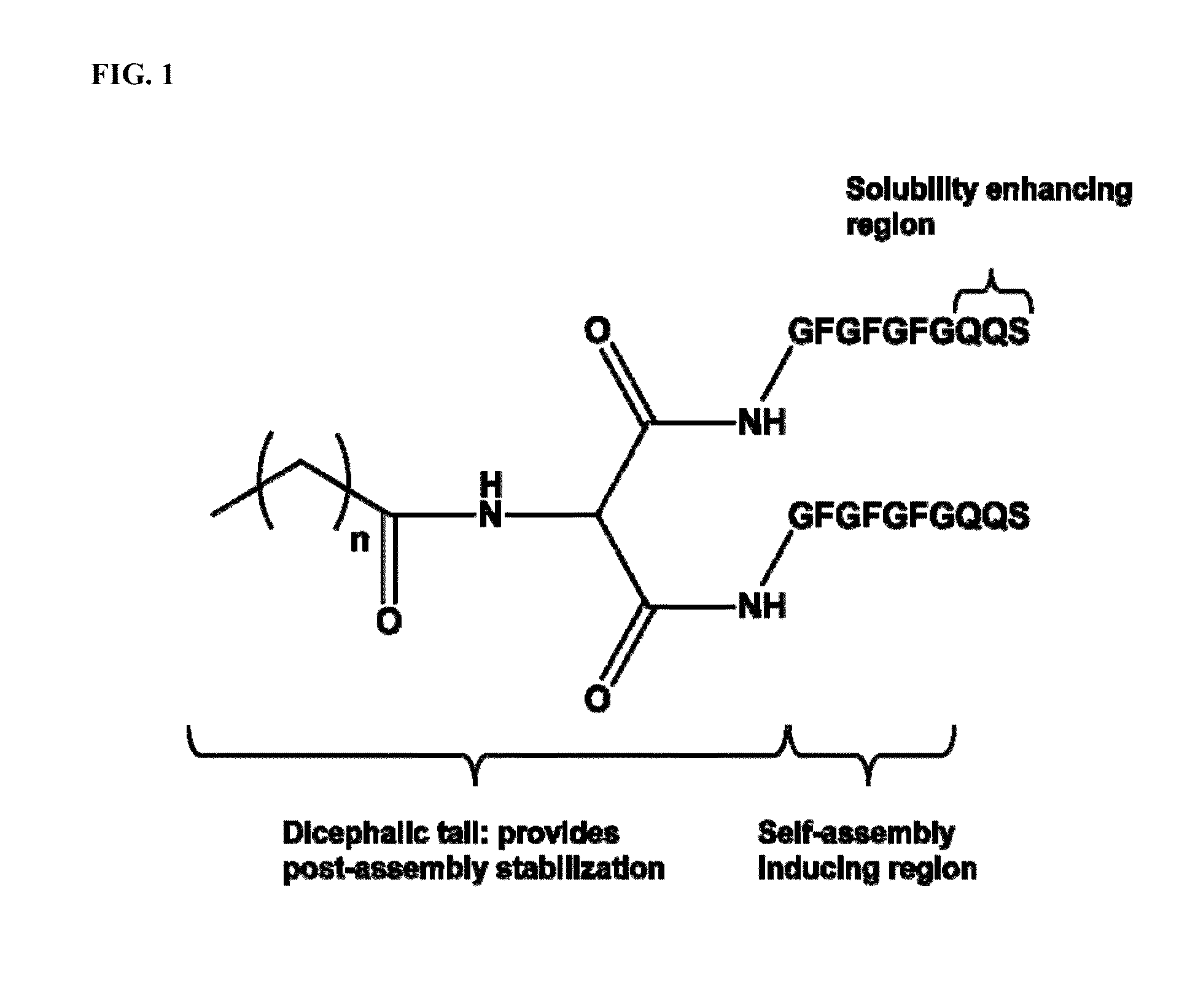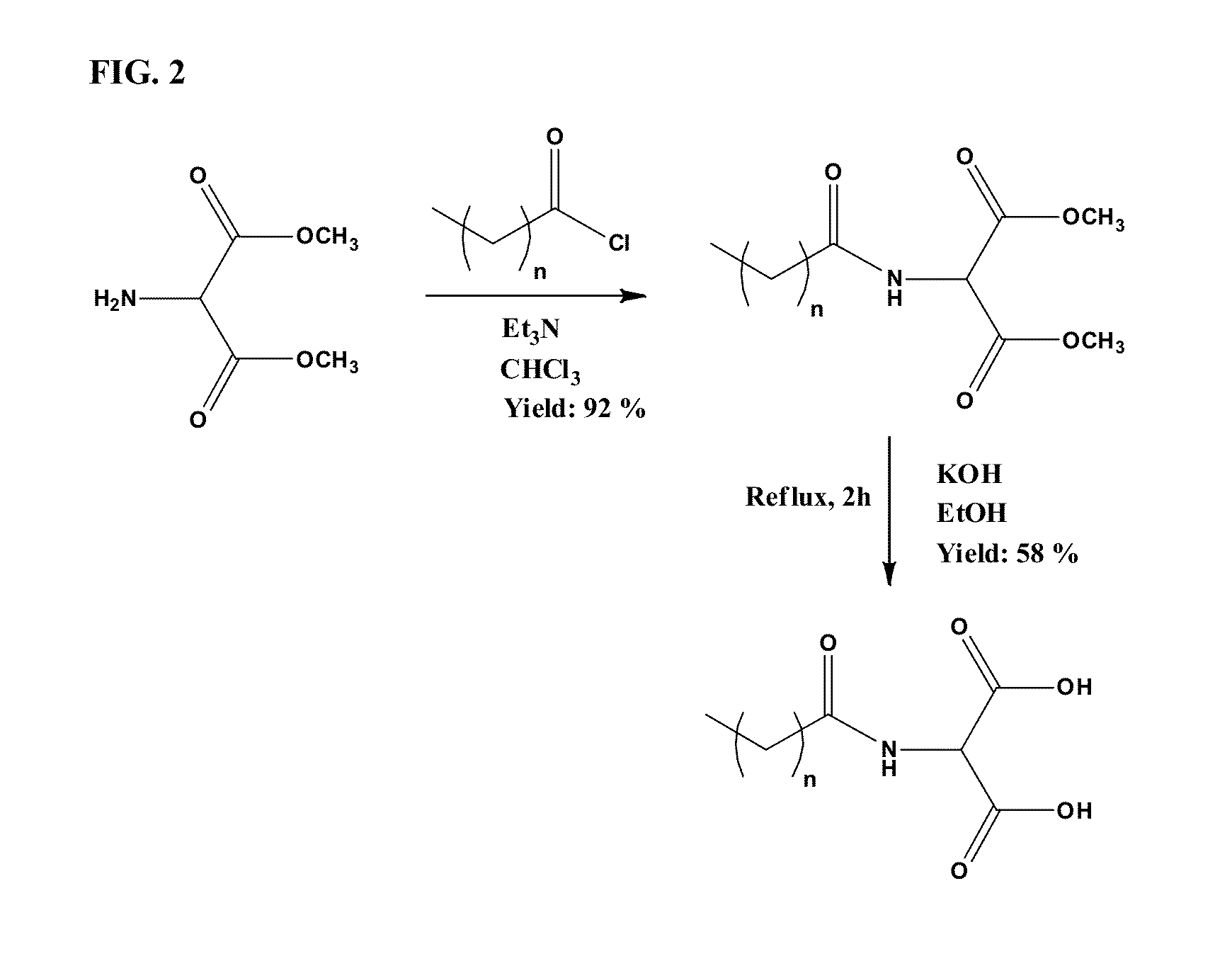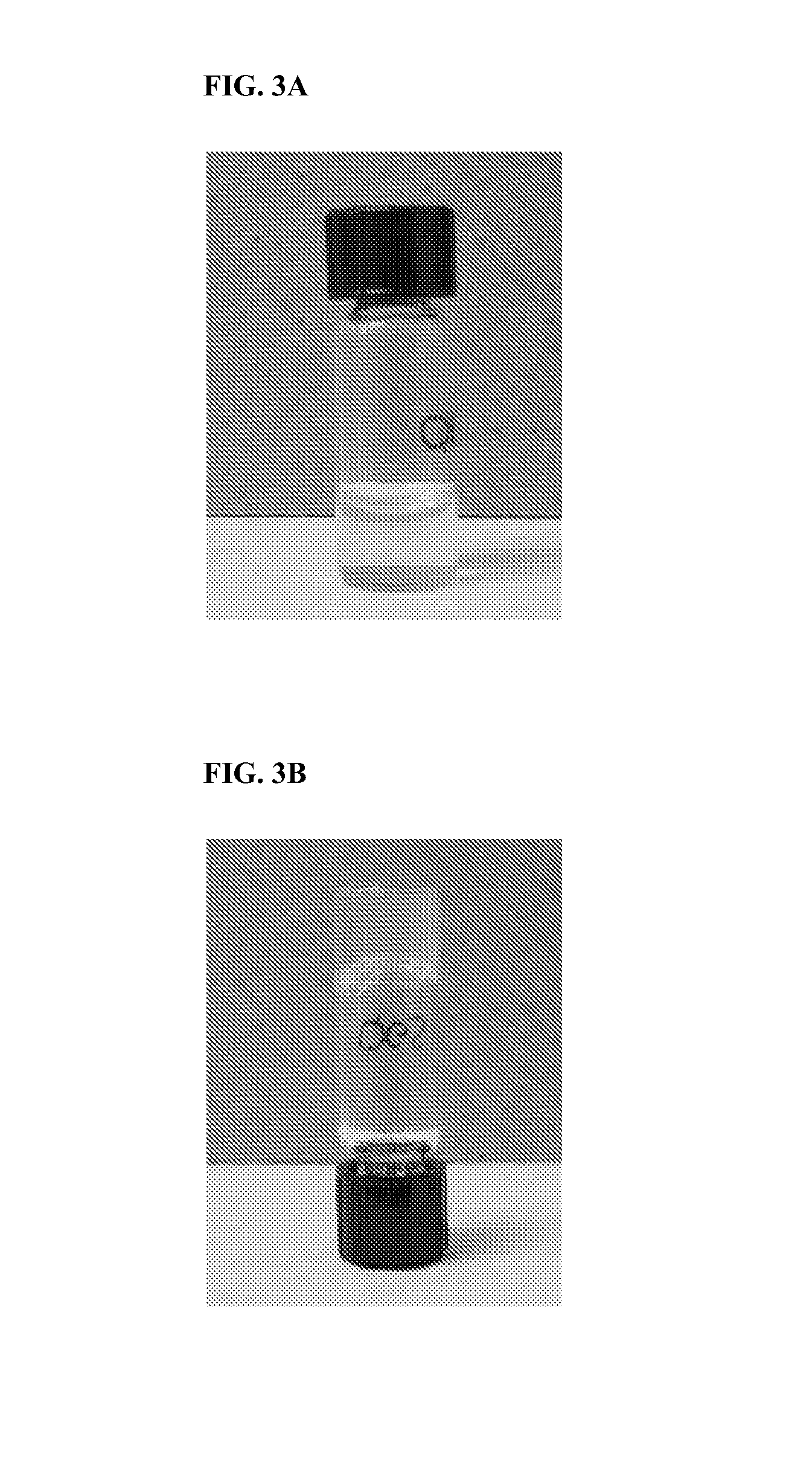Self-assembling hydrogels based on dicephalic peptide amphiphiles
a dicephalic peptide and amphiphile technology, applied in the field of dicephalic peptide amphiphiles, can solve the problems of limiting the scope of accessible sequences, affecting and affecting the safety of fmoc protecting groups upon degradation of peptides, so as to increase the solubility of amphiphiles
- Summary
- Abstract
- Description
- Claims
- Application Information
AI Technical Summary
Benefits of technology
Problems solved by technology
Method used
Image
Examples
example 1
Synthesis of the Dicephalic Tail
[0048]The synthesis of the tail was performed on a multi-gram scale (˜5 g starting material) and starts from the methyl ester of 2-amino-malonic acid and palmitoyl chloride (FIG. 2). The coupling of palmitoyl chloride to 2-amino-malonic acid in chloroform was achieved in 92% yield. The product was purified by subsequent extractions with hydrochloric acid, 10% sodium bicarbonate and water. Subsequently, ester hydrolysis in ethanol was performed by reflux for 2 hours in the presence of excess potassium hydroxide. Purification was performed by a series of extractions with hydrochloric acid, saturated sodium chloride solution and water. The organic layer was dried with magnesium sulfate but this caused the formation of a gel-like mixture rather than the standard magnesium sulfate hydrate precipitate. Attempts to filter of the magnesium sulfate hydrate were unsuccessful. Therefore, the mixture was triturated with water to remove the magnesium sulfate hydra...
example 2
Manual Solid Phase Peptide Synthesis
[0049]Starting from 0.25 mmol pre-loaded Wang resin (100-200 mesh), the resin was swollen in dichloromethane for 1 hour in a peptide synthesis vessel. Subsequently, a cycle of deprotection and amino acid coupling steps was repeated until all amino acid residues were coupled. Deprotection was achieved by adding 5 cc of 20% piperidine in dimethylformamide (DMF) and shaking for 5 minutes followed by draining the deprotection cocktail. This was repeated twice for a total of three deprotection steps. After an N-methylpyrrolidone (NMP) wash, coupling was performed by dissolving 1 mmol (2-(1H-Benzotriazol-1-yl)-1,1,3,3-tetramethyluronium hexafluorophosphate) (HBTU) in 5 cc NMP which was subsequently added to 1 mmol amino acid. The mixture was incubated room temperature for 5 minutes after which 0.3 cc diisopropylethylamine was added. The mixture was then added to the resin and shaken for 1 hour. After an NMP wash, the next cycle was performed.
[0050]After...
example 3
Automated Solid Phase Peptide Synthesis
[0052]Automated synthesis was performed on an Focus XC synthesizer (AAPPTEC, Louisville, Ky.) on a 0.25 mmol scale starting from pre-loaded Wang resin (100-200 mesh). The resin was swollen for 15 minutes in NMP. Deprotection was performed in two steps, first a three minute incubation with 20% piperidine in DMF followed by a 10 minute incubation with 20% piperidine in DMF. After 6 washes with NMP, coupling was performed by pre-mixing 3.7 cc of 0.2M amino acid solution and 0.2M HBTU in NMP followed by the addition of 2.4 cc of diisopropylethylamine. The mixture was then added to the resin and shaken for 30 minutes. After 6 NMP washes the next cycle was performed.
[0053]After all amino acids were added, the tail was added by the following procedure. 70 mg HBTU was dissolved in 5 cc NMP and added to 40 mg tail (prepared as described in Example 1). The mixture was sonicated briefly to facilitate dissolution of the tail. Next, 0.1 cc diisopropylethyla...
PUM
 Login to View More
Login to View More Abstract
Description
Claims
Application Information
 Login to View More
Login to View More - R&D
- Intellectual Property
- Life Sciences
- Materials
- Tech Scout
- Unparalleled Data Quality
- Higher Quality Content
- 60% Fewer Hallucinations
Browse by: Latest US Patents, China's latest patents, Technical Efficacy Thesaurus, Application Domain, Technology Topic, Popular Technical Reports.
© 2025 PatSnap. All rights reserved.Legal|Privacy policy|Modern Slavery Act Transparency Statement|Sitemap|About US| Contact US: help@patsnap.com



